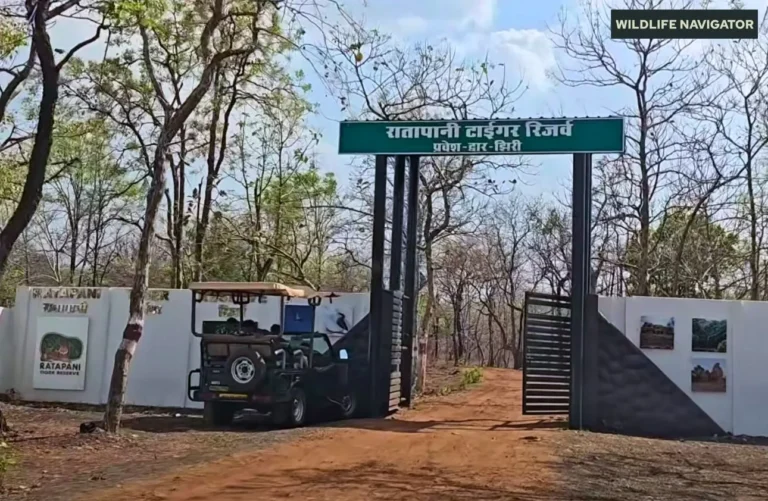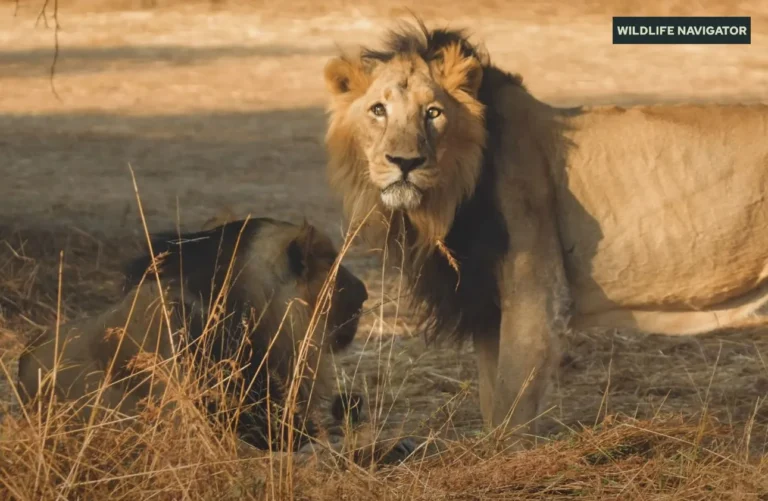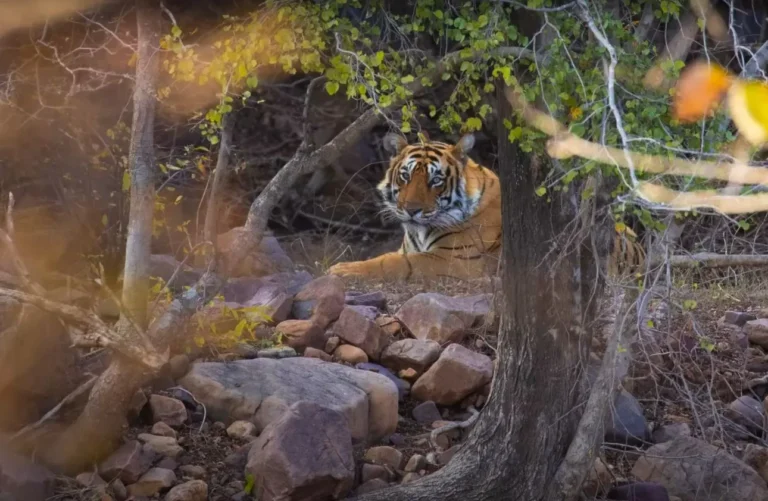Desert National Park: A Complete Guide to Rajasthan’s Majestic Thar Wilderness

Desert National Park is one of India’s most breathtaking and biologically rich desert ecosystems—a vast expanse where the golden sands of the Thar stretch endlessly under a dramatic sky. Located across the Jaisalmer and Barmer districts of Rajasthan, this protected area showcases the true essence of India’s desert wilderness. Unlike the common perception of deserts as barren and lifeless, this landscape is bursting with hidden life: resilient grasses swaying between dunes, camouflaged mammals moving quietly across scrublands, and iconic birds soaring against the warm desert winds.
The park is especially known for its stunning habitats—towering sand dunes, rugged rock formations, salt lake bottoms, and even ancient fossil sites that date back millions of years. Together, they form an ecosystem that supports some of India’s most remarkable wildlife, including the critically endangered Great Indian Bustard.
For nature lovers, photographers, and wildlife enthusiasts, Desert National Park is more than a destination—it’s an immersive experience of raw beauty and deep ecological significance. It stands as a reminder of how delicate yet powerful desert ecosystems can be, and why protecting them is so important for our natural heritage.
History, Landscape & Habitat Diversity
Desert National Park was established to protect one of India’s most fragile and unique ecosystems—the Thar Desert. Recognised for its ecological importance and its role in supporting wildlife specially adapted to extreme arid conditions, the park was created to conserve both biodiversity and geological heritage. Over the years, it has become one of the most significant conservation landscapes in Rajasthan, especially for the Great Indian Bustard, whose survival is closely tied to this region.
The park’s landscape is a spectacular blend of desert habitats that tell the story of both natural history and evolution. Vast stretches of towering sand dunes dominate the scenery, constantly shaped by the desert winds. These are interspersed with semi-arid plains and rugged rocky outcrops, creating a mosaic of microhabitats that support diverse species. Large patches of thorny scrub and grasslands provide essential cover and grazing grounds for herbivores, while salt lake bottoms and near-barren flats reveal the region’s ancient geological past.
One of the most captivating aspects of the park is its fossil-rich sites, some dating back 180 million years. These remnants—ranging from marine fossils to traces of prehistoric creatures—highlight the dramatic transformation of this landscape from an ancient seabed to the desert we see today.
Flora of the Thar Desert
Despite its harsh climate and minimal rainfall, Desert National Park supports a surprisingly rich variety of plant life specially adapted to survive in extreme arid conditions. These hardy species play a crucial role in stabilising dunes, providing food for wildlife, and maintaining the delicate ecological balance of the Thar. Most plants here are drought-resistant, with features like deep root systems, reduced leaves, waxy coatings, and water-storage abilities—all helping them thrive where temperatures soar and moisture is scarce.
Major Plant Species Found in Desert National Park
- Khejri (Prosopis cineraria)
- Ber (Ziziphus mauritiana)
- Ker (Capparis decidua)
- Phog (Calligonum polygonoides)
- Cactus and succulent varieties
- Sevan Grass (Lasiurus sindicus)
- Aak (Calotropis procera)
- Prosopis juliflora (mesquite)
- Dhamasa (Fagonia cretica)
- Goria grass and other desert grasses
Fauna of Desert National Park
Desert National Park is a remarkable refuge for wildlife uniquely adapted to the harsh Thar environment. The extreme climate, open landscapes, and sparse vegetation may appear unforgiving, but they support an impressive range of mammals, birds, reptiles, and desert-specialist creatures. From elusive predators to graceful antelopes and vibrant birdlife, the park showcases how life not only survives but thrives in one of India’s driest regions. Its open terrain also makes wildlife sightings rewarding, especially during early mornings and late evenings.
Major Mammals
- Chinkara (Indian Gazelle)
- Desert Fox (Vulpes vulpes pusilla)
- Indian Fox
- Caracal
- Desert Cat
- Blackbuck
- Hedgehog species
- Nilgai (occasionally in fringe areas)
Major Birds
- Great Indian Bustard (Flagship species)
- Macqueen’s Bustard (winter migrant)
- Larks and Pipits
- Sandgrouse
- Short-toed Snake Eagle
- Laggar Falcon
- Eurasian Griffon
- Tawny Eagle
- Desert Wheatear
Reptiles & Desert Specialists
- Spiny-tailed Lizard (Sanda)
- Monitor Lizard
- Saw-scaled Viper
- Russell’s Viper
- Rat Snake
- Geckos and Skinks
- Scorpions and desert arthropods
The Great Indian Bustard – The Jewel of the Park
The Great Indian Bustard (GIB) is not only the pride of Desert National Park but also one of the rarest birds on the planet. Once widespread across India’s grasslands and semi-arid regions, its numbers have drastically declined, making this park one of its last secure refuges. The vast open plains, sparse vegetation, and undisturbed habitats of the Thar provide ideal conditions for this tall, elegant bird to feed, breed, and raise its young.
The bustard is known for its distinctive black crown, long neck, and striking white underparts. Its slow breeding rate—laying only one egg per year—combined with habitat loss and predator pressures, makes its survival extremely challenging. Within Desert National Park, focused conservation measures such as habitat protection, controlled grazing zones, and community awareness programs are being implemented to safeguard its remaining population.
Key Highlights
- Conservation Status: Critically Endangered
- Habitat: Open grasslands, scrublands, semi-arid plains
- Diet: Insects, small reptiles, seeds, berries
- Threats: Habitat loss, power line collisions, hunting (historically), low breeding rate
- Conservation Efforts: Bustard breeding centres, habitat restoration, undergrounding of power lines, community involvement
Fossils & Geological Surprises
Desert National Park is not just a haven for wildlife—it is also a treasure trove of prehistoric secrets. Scattered across its rugged terrain are fossil beds believed to be around 180 million years old, offering a rare glimpse into an ancient world that once existed here. Long before the Thar Desert took shape, this region was part of a vast sea, and the fossils found today—ranging from marine organisms to early reptiles—stand as evidence of that dramatic transformation.
The park’s fossil sites are especially fascinating for geologists, researchers, and curious travellers. Many discoveries suggest the presence of prehistoric creatures, ancient plant life, and even dinosaur-era remnants, making Desert National Park one of India’s most intriguing natural history landscapes.
Major Fossil Highlights
- Fossilised wood dating back millions of years
- Marine fossils indicate the region’s ancient seabed origins
- Dinosaur-age fossils, including impressions and fragments
- Fossilised remains of early reptiles
- Sedimentary formations that reveal the evolution of the Thar Desert
Safari & Visitor Experience
Exploring Desert National Park is an immersive experience that reveals the true beauty of the Thar. The vast open landscapes, shifting sand dunes, and serene silence of the desert create a safari atmosphere unlike any other in India. Most visitors explore the park through guided jeep safaris, which take you deep into wildlife-rich zones such as Sudasari and surrounding dunes. Birdwatchers, especially, find this park exceptional, with chances to spot the Great Indian Bustard, raptors, and desert specialists in their natural habitat.
Photography enthusiasts will enjoy the warm golden hues, dramatic dunes, and the stark contrasts that define the Thar. Early mornings and evenings offer the best conditions, both for sightings and for capturing the magic of the desert light.
Safari Activities
- Jeep Safari through sand dunes and grassland habitats
- Birdwatching Trails around Sudasari and adjoining areas
- Nature Interpretation with local guides
- Landscape Photography sessions during golden hours
What You Can Expect
- Open desert terrain with excellent visibility
- Possible sightings of bustards, foxes, chinkara, and raptors
- Peaceful, crowd-free zones ideal for nature lovers
- Stunning desert horizons and starry night skies
Best Time to Visit & Climate Guide
The climate of Desert National Park is extreme and unpredictable, making the timing of your visit incredibly important for a comfortable and rewarding experience. The best season to explore this vast desert wilderness is winter, when temperatures are cool, wildlife activity increases, and the chances of spotting birds—especially migratory raptors—are much higher. During this period, the landscapes are pleasant enough for long safaris, photography, and birdwatching sessions.
Summer, on the other hand, can be intensely harsh, with temperatures soaring above 45°C. While the desert looks stunning in summer light, the heat can be overwhelming for most visitors. Monsoon brings very little rainfall, but the desert does turn slightly greener, attracting herbivores and birds to fresh patches of grass.
Ideal Visiting Season
- November to February (Peak season; best for wildlife sightings and safaris)
Seasonal Conditions
- Winter: Cool days, cold nights, excellent for safaris
- Summer: Very hot, limited wildlife movement during the day
- Monsoon: Light showers, slight greening of desert, moderate humidity
How to Reach, Entry Fees & Nearby Attractions
Reaching Desert National Park is convenient for travellers, thanks to its close proximity to the historic city of Jaisalmer. Most visitors use Jaisalmer as the base, from where safaris, guided tours, and transport to Sudasari and nearby zones are easily arranged. The park is well-connected by road, while Jaisalmer also has a railway station and an airport with seasonal flights. Entry fees and safari charges vary slightly depending on the zone and guide services, but the process is straightforward, with permits generally issued at key entry points such as Sudasari.
Apart from the park itself, the region is dotted with culturally and geologically rich attractions. From the golden dunes of Sam to ancient fossil sites and the majestic Jaisalmer Fort, visitors can explore a blend of natural beauty and desert heritage.
How to Reach
- By Road: Well-connected to Jaisalmer (approx. 45–60 km to main safari zones)
- By Rail: Jaisalmer Railway Station with direct trains from major cities
- By Air: Jaisalmer Airport (seasonal flights; nearest major airport is Jodhpur)
Entry Fees & Permits
- Entry Fee:
- Indian Nationals: Free
- Foreign Tourists: ₹200
- Other Fees:
- Guide Fee: ₹300
- Jeep Fee: ₹200
- Video Camera Fee: ₹40
Nearby Attractions
- Sam Sand Dunes – Iconic desert dunes ideal for sunsets
- Sudasari Desert Region – Core area for wildlife and bustard sightings
- Fossil Park – Showcases million-year-old desert fossils
- Jaisalmer Fort – UNESCO World Heritage Site
- Kuldhara Village – Historic abandoned settlement
- Khuri Dunes – Quieter alternative to Sam
Travel Tips & Conservation Awareness
Visiting Desert National Park is a rewarding experience, but the extreme climate and fragile ecosystem require visitors to be well-prepared and respectful of the environment. The desert’s harsh sun, dry winds, and open terrain make it essential to plan your safaris carefully and carry the right essentials. At the same time, Desert National Park is a critical conservation landscape, especially for species like the Great Indian Bustard, so responsible tourism plays a key role in protecting its biodiversity.
Travel Tips for Visitors
- Carry plenty of water, ORS, and light refreshments.
- Wear light cotton clothing, sun hats, sunglasses, and sunscreen.
- Prefer early morning or late afternoon safaris for better sightings and cooler weather.
- Keep a binocular and camera, as the open terrain offers excellent viewing opportunities.
- Avoid walking on fragile dune vegetation.
- Respect local guides’ instructions and stay within designated routes.
- Pack a light jacket in winter—desert nights can get cold.
Responsible Tourism & Conservation
- Do not disturb or approach wildlife, especially bustard breeding areas.
- Avoid littering; carry back plastic waste.
- Support eco-friendly operators and local conservation initiatives.
- Reduce noise during safaris to avoid stressing animals.
- Encourage awareness about the Great Indian Bustard and other endangered species.
- Understand that even small actions—like staying on marked tracks—help protect this fragile habitat.
Conclusion
Desert National Park stands as a powerful reminder of how life adapts, survives, and flourishes even in the harshest landscapes. Its sweeping dunes, ancient fossils, resilient flora, and unique wildlife—especially the majestic Great Indian Bustard—make it one of India’s most extraordinary natural treasures. For travellers, it offers a rare chance to experience the raw beauty of the Thar, far from the noise of typical tourist trails.
Yet, beyond its beauty, the park also carries a deeper message: the urgent need to protect fragile desert ecosystems and the species that depend on them. By travelling responsibly, supporting conservation efforts, and appreciating the delicate balance of this desert wilderness, every visitor becomes part of its ongoing story of survival. Desert National Park isn’t just a place to explore—it’s a landscape to respect, cherish, and preserve for generations to come.





